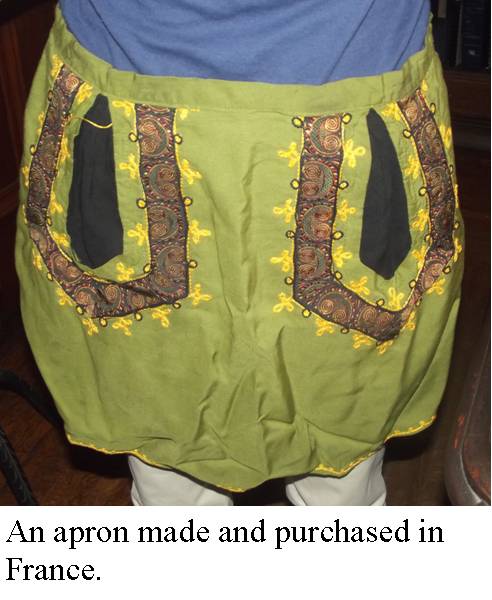
We Came to North America: The French by Casey Horton
The French made their first voyages to North America 450 years ago. For the next 150 years, they built settlements in what is today eastern Canada. They also explored west and south, deep into the heart of the continent.
The first French people who came to North America were explorers, sent by the French king to search for a shorter route to Asia and to find a land of wealth. They claimed the land for France, but they found neither the Northwest Passage, the fabled short water route to the Far East, nor gold and precious metals. They did, however, find beaver pelts and other furs that could be sold for large sums of money in Europe.
The French did not settle the colony for almost another hundred years. At first, they built bases for fur traders. These forts were also used by French priests who traveled to native villages, hoping to convert the Native Americans to Christianity.
Gradually, more French people came to New France and settled along the St. Lawrence River, on the Atlantic coast of Canada, and as far south as Louisiana. Some were farmers, coming to make a home with their families. Others were artisans: carpenters, metalworkers, and stone masons, who practiced their craft in the towns. Soldiers were sent from France to defend the colony from attack, and government officials came to rule this vast territory in the name of the king. Life was often hard. The climate was harsh and supplies were scarce. Sometimes, homes and villages were attacked by the Iroquois, who were at war with the Hurons, the allies of the French.
Eventually, because of wars in Europe, France lost all its colonies in North America to England and Spain. The colonists, however, stayed, and French-speaking people still live in many of the areas their ancestors settled in hundreds of years ago. Even in areas of the United States where French is no longer spoken, the original French names of towns and places have been kept, a reminder of the days when these areas were explored and settled by the French. The French language, music, culture, and joie de vivre, or joy of living, survived and have, over the centuries, enriched so much of North American life.
The Journey
The journey across the ocean was often very difficult. The crossing from France to Quebec could take as long as ten to twelve weeks. Heavy storms tossed the ships about on the waves, and many of the ships were in dangerously poor condition. Many ships carried more people than was legally allowed. Passengers had to bring their own food and were crowded together in the dark and unhealthy living area below the deck.
Life in New France
Although Native Americans had lived, hunted, and traded in these lands for thousands of years, the king claimed all the territory in New France as his own. He gave large areas of land along the rivers to important people, called seigneurs.
The seigneur divided his land into long strips, called rotures, running from up the river to the forest wilderness. Each lot was given to a farming family. The tenant farmer, or habitant, had to build a house, cultivate his land, pay taxes to the seigneur, and work on the seigneur's land for three or four days a year. The seigneur was responsible for building a house and mill on his own land, for paying part of the cost of building a church, and for helping with the construction of bridges and roads.
The first job of the habitant was to clear the land, chopping trees and burning stumps. Because families ate so much bread, one of the most important crops was wheat. Farmers also grew hay for their animals and kept a vegetable garden. They raised chickens and pigs for meat, cows for milk and meat, and horses to pull their plows and sleighs.
Life at first was hard for habitant families, but it was often better than the lives they had lived in France. They owned their own farms, there was free wood for building and heating, and the forests and rivers were filled with wild animals and fish.
Habitants built their houses using logs, excellent insulators against the wind and cold. Roofs were steeply sloped so the snow would slide off easily. A huge fireplace in the kitchen-living room was used for both cooking and heating. Chairs, a table, a bench-bed, and cots for the children were made by the habitants during the long winters and were painted bright red. Hand-hooked rugs made the room cozy and comfortable.
The long winters were a time for sleighing and skating on the frozen river and for having parties. The whole family bundled up and set off in their sleigh over the snow to visit friends or relatives. Weddings and baptisms were important events with lots of food, and singing and dancing lasted well into the night.
Tinker, Tailor, Soldier...
Not everyone in New France was a farmer or a fur trader. Many people lived in the towns and worked as carpenters, shopkeepers, stonemasons, and artisans. Others were priests, doctors, and teachers. Quebec was the largest town in New France. The wealthiest and most important people lived in comfortable stone houses in the upper town. Below, near the river, shops and small stone houses lined the narrow streets.
The Cajun Lifestyle
The Acadians in Louisiana established a unique lifestyle that is an important part of that state's culture to this day. Many of them settled in New Orleans, where they became known as the Cajuns.
The word "Cajun" is thought to come from "Acadian" or "Canadian." The name was given to those French settlers who were driven out of Acadia by the British in the eighteenth century and went to southern Louisiana. Today, the Cajuns live in small communities in that part of the state, known as French Louisiana, and also parts of Texas. Most of them farm cattle and grow crops such as corn, sugar cane, cotton, and yams. They speak a French that combines English, Spanish, German, and Native American languages.
Cajun often lived in isolated communities. Because Cajuns kept to themselves, their culture remained unchanged for so long. Sometimes they were persecuted by non-Cajun Americans who often were suspicious of them and disapproved of their "foreign" ways. In the early 1900s, an attempt was made to force them to give up their culture. Cajun children were forbidden to speak the language of their ancestors in schools.
Although the Cajuns have now been exposed to modern U.S. culture, many of them have been able to keep their old ways. Today, they are known for their folk music and their unique style of cooking, which includes such ingredients as pigeon peas, spices, and rich sauces, and specializes in dishes such as jambalayas, gumbos, and blackened catfish.
The music of the Cajuns is usually a song, sung to the accompaniment of a fiddle or an accordion and other instruments. The rhythm may be slow and dreamy, like a waltz, or fast and upbeat. It is not just for listening but is played at dances, which the Cajuns call fais do do. Through the years, Cajun music has been influenced by other musical forms, including jazz, blues, and country and western. Recently, traditional Cajun music has made a comeback. It is played on the radio and is featured at music festivals. Many of the songs date back to the music that the original settlers of Acadia and Quebec brought with them from France so long ago.
A Cajun Classic
Andouille, a thick Cajun sausage, is a great favorite in New Orleans. It is made with lean pork and pork fat, with a lot of garlic. The sausage is also used in an oyster and andouille gumbo, which was made popular in Laplace, a Cajun town close to New Orleans. Laplace, which means "the place" in French, calls itself the "Andouille Capital of the World." Along with poultry, fish, and seafood, such as oysters and shrimp, alligator is an important ingredient in some Cajun recipes.
Circus Act
The world-famous, Quebec-based circus, Cirque du Soleil, started off as a group of street performers in 1980. Today, its dazzling shows mix high-wire acts, contortionists, jugglers, stilt-walkers, and clowns with fabulous costumes, original lighting, and unique music. The group, whose name means "Circus of the Sun," has toured all over Canada, the United States, and Europe. It performed before an audience of millions at the televised Atlanta Olympic Games in 1996. Cirque du Soleil has permanent "big top" in Montreal, Quebec, and a year-round troupe in Las Vegas, Nevada.
Courtesy of the Warren County Historical Society